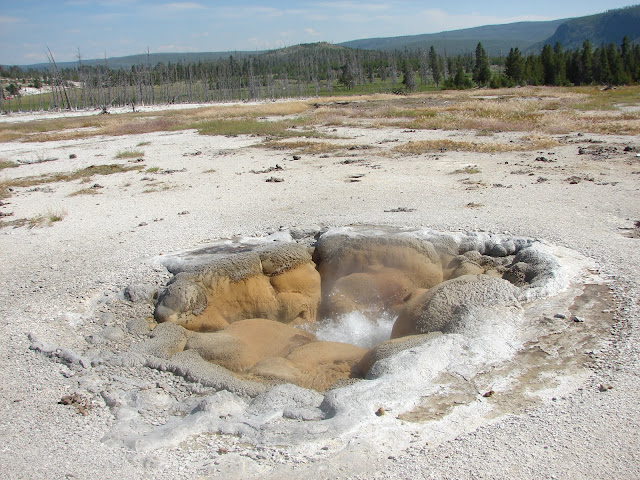I don't belong to the category of swashbucklers but my love for
traveling took me on roads where I had to step out of my comfort
zone. Wise men say, face your fears and fear will succumb to you.
Quite honestly, many of my fears simply magnified further :P. While on a white water
rafting trip, I kept screaming at the guide to turn back, almost believing my heart would collapse but of course, the hearts are much stronger than we assume. End of the course, I vowed never to
raft again, not even for a million dollars not even at gunpoint. But yes I tried something else next time. Like another wise man once said, 'Courage is not
the absence of fear but rather the judgment that something is more
important than fear'. Guess learning something new, experiencing something new, exploring something new was far more important.
Being alone was one of those many things I feared.
Alone! evoked a feeling of intense dread. Perhaps, I can blame it on my over-protected and sheltered childhood, or maybe it's just how I am - a wee bit timid and over-conscious. Watching a movie alone in a theater, eating alone in a restaurant, and dancing alone on a stage, were (or rather still are) a few of the many things I shirk from. More due to plain awkwardness than fear. Living alone? wasn't even the part of my worst nightmares and traveling alone? wow!! was that even a thing?!!!
Alone was definitely out of the question for a very very long time till I first learned to stay alone when I started working, yet I was surrounded by friends and family to really feel a solitary existence. The traveling alone happened when I came back to India. My trip to Lahaul and Spiti Valley was my first solo excursion and unlike the rafting experience, it gave me the courage to try many more journeys alone, more precisely on life's road. Had read somewhere - 'The most important thing that being alone teaches is emotional self-sufficiency' and that sure is true.
We were at a national park in Borneo, trekking since 9 a.m., and on the last two trails in our itinerary. I had unconsciously moved ahead of my friend. The sun had peaked. The swelter of mid-afternoon was exhausting. My shirt was drenched in sweat. The feet hurt. I looked at the watch; it was almost noon. The map read another 3-hour trek ahead. An additional half an hour, if I added my less-than-average pace. The last boat off the island was scheduled to leave at 4 p.m. I reminded myself I should return by 3. Arriving at a bench in the trail, I turned round to find no one. I decided to wait, Nat couldn't be too far away. After 10 minutes I got worried! Should I turn back? Should I move forward? Did she go back? Is she hurt? I was trying to decide the next step when I saw a couple approaching from the opposite direction. They looked tired. The tall, well-built, athletic man had removed all his clothing, save the shorts. The heat made his white skin burnt and ruddy.
I asked, 'How's the path ahead?' He said, 'A tad bit bad for a short stretch, and then it gets fine. Manageable. You should be fine.' I asked if they met others? He said, 'None for a very long way. I doubt you'll meet any.' 'Oh! Okay. I was trekking with a friend, and she lagged behind, not sure if she went back or if she met with some accident on the way!' They assured me, that they would look for her and that it's tough to get into a bad accident here. The burly man said, 'Worst case she might have sprained her leg but don't worry mate, we will take care of the necessary.' They suggested I move forward and complete the trek. I thanked them for the boost yet there were apprehensions.

Trekking alone in a national park in a rainforest wasn't the most tempting proposition for me. I almost decided to turn back. Time was also a factor. I had just enough time to complete the hike if I didn't wait. After a quick debate with myself, I forged ahead. How often do we get such opportunities in life? Today I had the time and the means. Tomorrow I may have neither.
After a short rocky climb, I arrived at a sandy plateau with sparse vegetation followed by a dried-up stream, and then came a long grassy stretch. Soon, I could see the sea at a distance. WOW!!! I wish Nat had come. This was way out of the world. There was a trail that took one down to the beach but I didn't have enough time. There's so much to do and so little time. Whatever little we are able to accomplish, is a blessing!
Perhaps I could make it because the trails were well-marked and I didn't meet any animals on the way. At the end of the trail waited a breathtaking sight and an exhausted heart that sighed with relief and pride for completing that which had begun.
The way back was easier. The path is no longer strange or scary and .....fear?!, I left it at the cliff edge :)
The way back was easier. The path is no longer strange or scary and .....fear?!, I left it at the cliff edge :)
PS: Nat was fine. The strong sun had given her a bad headache and hence she decided to wait at the pier.


































































